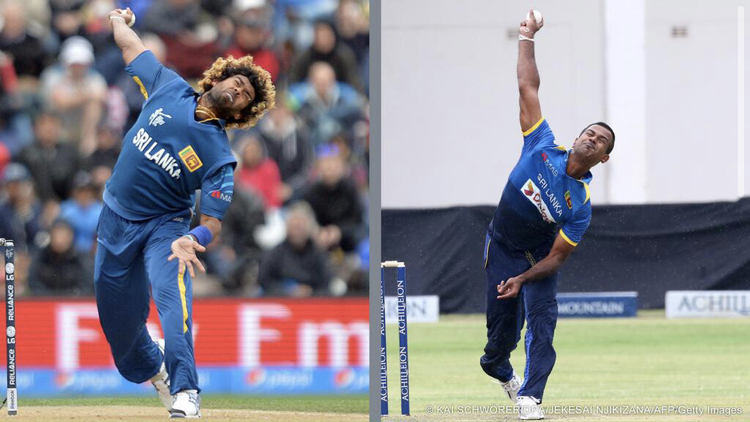A team of physicists in Dubai have studied the behavior of balls as they travel through the air to explain the surprising effect of a controversial cricket technique known as round-arm bowling. Round-arm bowling, recently popularized by former Sri Lankan bowler Lasith Malinga, is instantly recognizable thanks to its nearly horizontal delivery style. The bowler releases the ball from the sides of the body and head, rather than from above and around the head — the more conventional bowling technique. It has proven to be a challenge for professional batsmen. And there’s some unique physics involved, according to Siddharth Sudhakaran, a fluid mechanics expert at Amity University in Dubai.
Sudhakaran led research into the physics behind the unpredictable style of bowling, using a wind tunnel to simulate the movement of the ball. Using special sensors and imaging equipment, Sudhakaran’s team tried to capture the pressure changes around the balloon as it moved through the air in a wind tunnel. They used a new ball that did not deteriorate when exposed to field or stadium conditions. But they could still see how a ball spinning at 2,500 revolutions per minute behaved against a batter.
The secret to the success of Malinga and other, emerging Sri Lankan cricketers, including Matheesha Pathirana and Nuwan Thushara who have modeled their own styles on Malinga’s sidearm or round arm technique, appears to be their ability to capture the Magnus effect, a phenomenon studied in physics.
The phenomenon describes how a spinning, spherical object — such as a cricket ball — shifts laterally in the direction of its spin as it travels through air. It is caused by variations in low pressure, surrounding the object as it travels.
It’s the same principle used in football. Picture former England star player David Beckham or the film Bend it like Beckham — Beckham would kick the ball in an off-center position to curve it around a defending player and sent it to the back of the net. It’s all about spin, and delivery speed.
“Let’s say Malinga is bowling at 90 miles per hour (~145 km/h) He bats at a very low point and if he can spin the ball a bit before he bowls it […] lateral movements,” says Sudhakaran. said. “You’re basically fooling the dough.”
Science is everywhere in sports. Like round-arm bowling in cricket or curveballs in other sports, it is used to get the most out of human skill. Professional sports are also turning to science to optimize clothing and equipment to keep up with technological advances. But sport cannot be science. Studies like Sudhakaran’s wind tunnel experiments are usually conducted without touching the ball, and this can affect the results. “The lab is an ideal scenario, so we use a new ball where changes in seam roughness are not taken into account,” Sudhakaran said. “[Old balls] have varying degrees of drift or lateral movement because of the complexity of the situation.”But if you want to beat your competitors in the field, getting a physics degree is not a bad idea.


























































